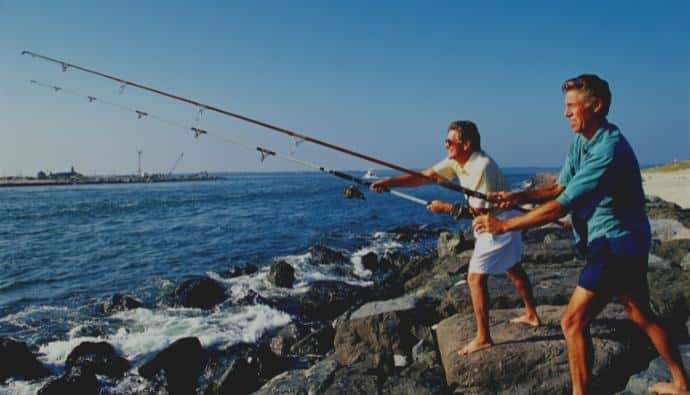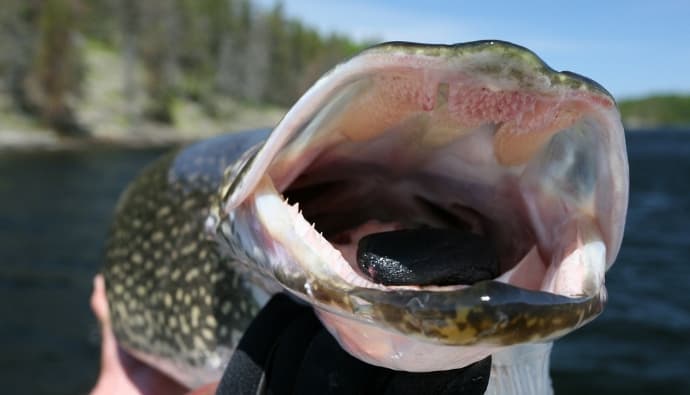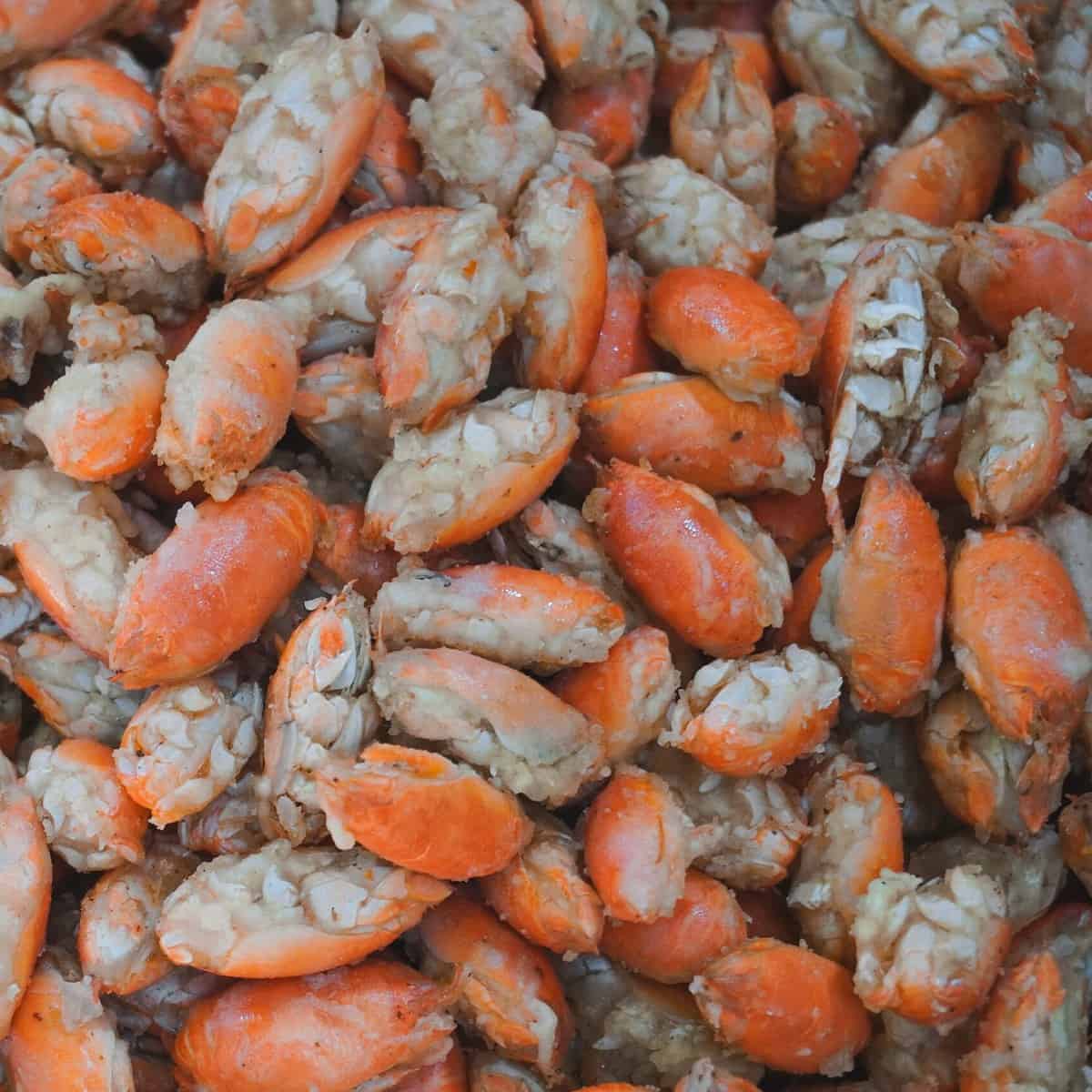The ocean is a vast and mostly unexplored world, hiding many mysteries beneath its surface. It’s no wonder that so many people are fascinated by the idea of fishing in the open sea.
Surf fishing is a popular way to catch some of the more elusive fish that swim in the waters off the coast.
Among the most popular targets for surf fishing are white seabass and halibut. These fish are notoriously difficult to catch, but you can increase your chances of success with the proper techniques.
This article will give you some tips on catching white seabass and halibut when surf fishing. Read on!
The Best Time To Catch White Sea Bass and Halibut
Catching white seabass and halibut can be a challenge, but there are certain times of the year when these fish are more active and easier to catch. White sea bass is typically best during the spring months, with March being the peak time.
Halibut, on the other hand, are most active during the summer months, mostly starting from May through September, with July being the best time to try your luck.
Of course, these are general guidelines, and you may have more success if you try fishing for these fish outside of these peak times.
The Best Bait To Use
One of the most important factors in catching white seabass and halibut is using the right bait. With white seabass, live bait is always the best option. Popular choices include anchovies, sardines, and squid.
Halibut, on the other hand, will feed on just about anything. Live bait is always a good option, but you can also try using cut bait, frozen bait, or even lures.
This is what Gary and Kaspar Kazazian, authors of California Surf Fishing: The Hunt for Big Fish said, “Halibut, I don’t think are very picky. What kind of bait do they hit? Anything that has a good side-to-side motion by the lure. But yeah, I don’t think they’re very picky about it. So I would say they are much easier to catch.” ‘
How To Rig Your Tackle
Once you’ve chosen the best bait, it’s time to rig your tackle. A medium to heavy action rod paired with a reel loaded with a 20-30lb test line for white seabass is a good choice. A 2-4 oz sinker placed above a barrel swivel is also recommended.
For halibut, a heavier setup is usually necessary. A heavy action rod paired with a reel loaded with a 60-70lb braided nylon line is a good choice. A 6-8 oz sinker placed above a barrel swivel is also recommended.
Where To Find White Seabass & Halibut
When surf fishing, it’s important to choose a spot where there is likely to be a good concentration of fish.
“And what do white seabass like to do? And typically, this is schooling white seabass because it’s rare that you’ll just catch one white sea bass. You’ll usually catch three or four when you catch one,” Gary and Kaspar Kazazian said.
Look for areas with deep drop-offs where there are reefs when looking for white seabass. These fish are often found near the coasts of California and Mexico.
Gary and Kaspar Kazazian said, “But the main thing you’re looking for structure-wise for white seabass is a deep drop-off where there’s a reef. And then, suddenly, it gets four to five feet deeper.”
On the other hand, Halibut are found all over the world in bottoms and kelp beds. In North America, they are often found off the coasts of Alaska, California, and Oregon.
“I would say there are a lot of people that do a pretty good job catching halibut in the surf. They find holes and troughs. They find where the reef meets the sand, and most of the time, they’re casting lucky craft, and halibut are just waiting there, flat on the sand,” Gary and Kaspar Kazazian said.

How To Cast Your Line
Casting your line is one of the most important aspects of surf fishing. You’ll need to practice your technique to ensure that you can cast your line accurately and with enough force to reach the fish.
When casting for white seabass, aim for a spot 10-20 yards offshore. You’ll need to cast your line further out for halibut, around 30-50 yards offshore. Once you’ve cast your line, allow the bait to sink to the bottom before starting to reel it in.
Gary and Kaspar Kazazian said, “Sometimes the drop-off will be right in front of you, depending on the tide. Sometimes you’re going to have to cast out a little 15 or 20 yards to get to where that big drop is, where white seabass are hanging out. So, it’s not always very far.”
Where To Fish for White Seabass and Halibut
When it comes to surf fishing, location is everything. You can look for areas with a sandy bottom and good water circulation for white seabass. These fish are typically found in 120-200 feet deep waters.
“At the right tide, it depends on the spot, right? At certain spots, it’s low tide, and you have those drop-offs at other spots. It’s like maybe a two- or three-foot tide,” Gary and Kaspar Kazazian said.
On the other hand, Halibut can be found in a variety of locations. They are often found near drop-offs, rocky areas, or kelp beds. These fish are typically found in waters 40-80 feet deep.
Fighting and Landing Your Fish
Depending on the size of the fish, this can be a challenging task. It’s important to keep a tight line while also being careful not to break your tackle.
Once you hook a white seabass, be prepared for a fight. These fish are known for their tenacity and will put up a good fight before they’re landed.
“I lost so many big white seabass last year, man. And you know, it’s a white seabass because they fight differently than every other fish. What a white seabass does when you hook into, at least into the surf, is they will go on this really long run, and no other surf species does,” Gary and Kaspar Kazazian said.
When fighting a white seabass, try to keep the fish away from structures that it can use. It’s also important to reel the fish slowly and steadily to avoid breaking your line.
Halibut might do a run, but they are lazy. You cannot classify Halibuts as great fighters. Gary and Kaspar Kazazian said, “When you hook up on a hall of it, they might do a run, but they’re pretty lazy fish. I would not call them great fighters.”
Tips and Tricks for Catch White Sea Bass and Halibut
Fishing for white seabass and halibut is a great way to relax and enjoy the outdoors, but it can also be frustrating if you don’t catch anything. If you’re hoping to improve your success rate, you can do a few things.
Right Location
Finding the right location is key to success when fishing for white seabass and halibut. The best place to start surf fishing for white seabass and halibut is from a jetty or pier that extends into the water.
This will give you access to deeper water where these fish are typically found. You can also fish from the shore, but you will likely have more success if you can cast your line further out into the water.
Right Bait and Tackle
For bait, live or fresh-cut squid is usually the best choice for white seabass. For halibut, live baitfish or fresh-cut anchovies work well.
As for tackle, you will need a medium to heavy-duty rod and reel combo that can handle the weight of these fish. A standard bottom fishing rig with a 2–4-ounce sinker is all you need.
Use the Right Techniques
When fishing for white seabass, try a slow retrieve and let your bait sink to the bottom. For halibut, a slow-trolling technique with live bait is often effective.
Pay Attention To the Tides
One of the most important things to remember when surf fishing for white seabass and halibut is to pay attention to the tides. These fish are more likely to bite during incoming or outgoing tides.
Fish in the Right Areas
Another good tip is to fish near areas of kelp beds, reefs, or drop-offs, as these fish often congregate in these areas.
Use Fresh Bait and Keep Your Hooks Sharp
Finally, use fresh bait and keep your hooks sharp for the best results.
Conclusion
Surf fishing for white seabass and halibut can be a great way to enjoy the outdoors and have a chance at landing a trophy fish.
You can improve your chances of success by paying attention to the tides, using the right bait and tackle, fishing in the right areas, and keeping your hooks sharp. With a little patience and practice, you can be surf fishing like a pro in no time.



 Facebook
Facebook YouTube
YouTube








